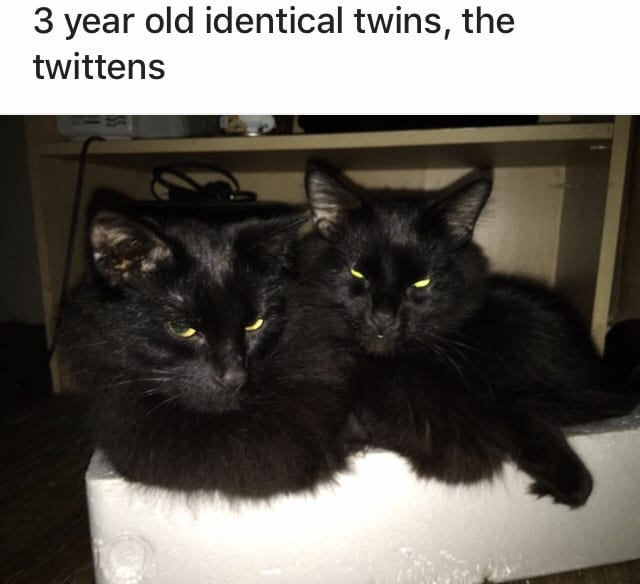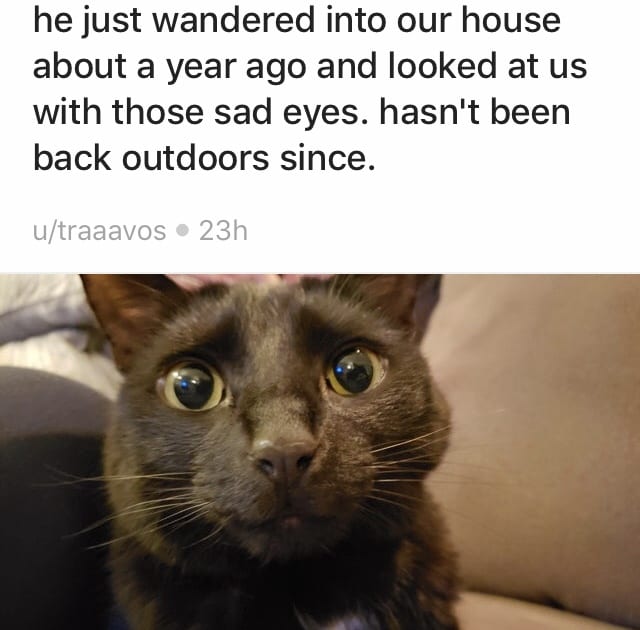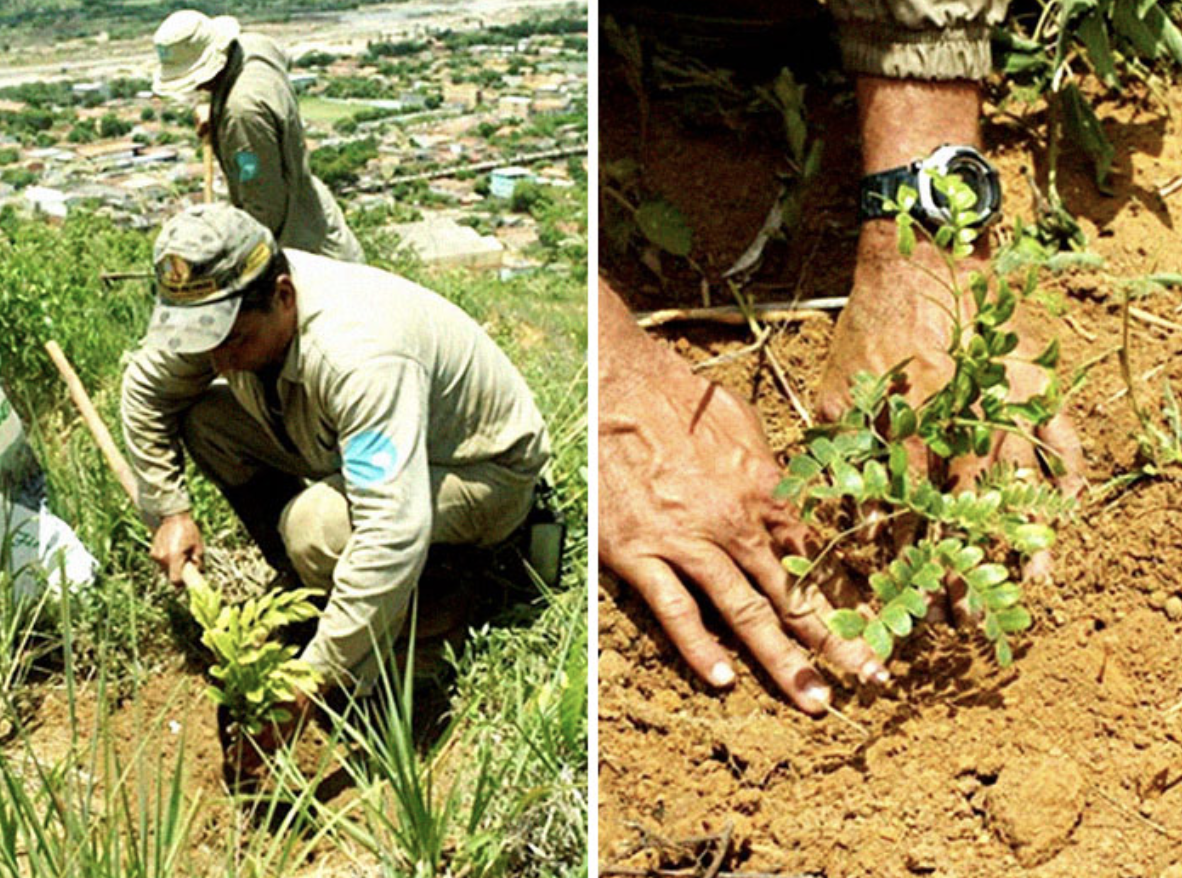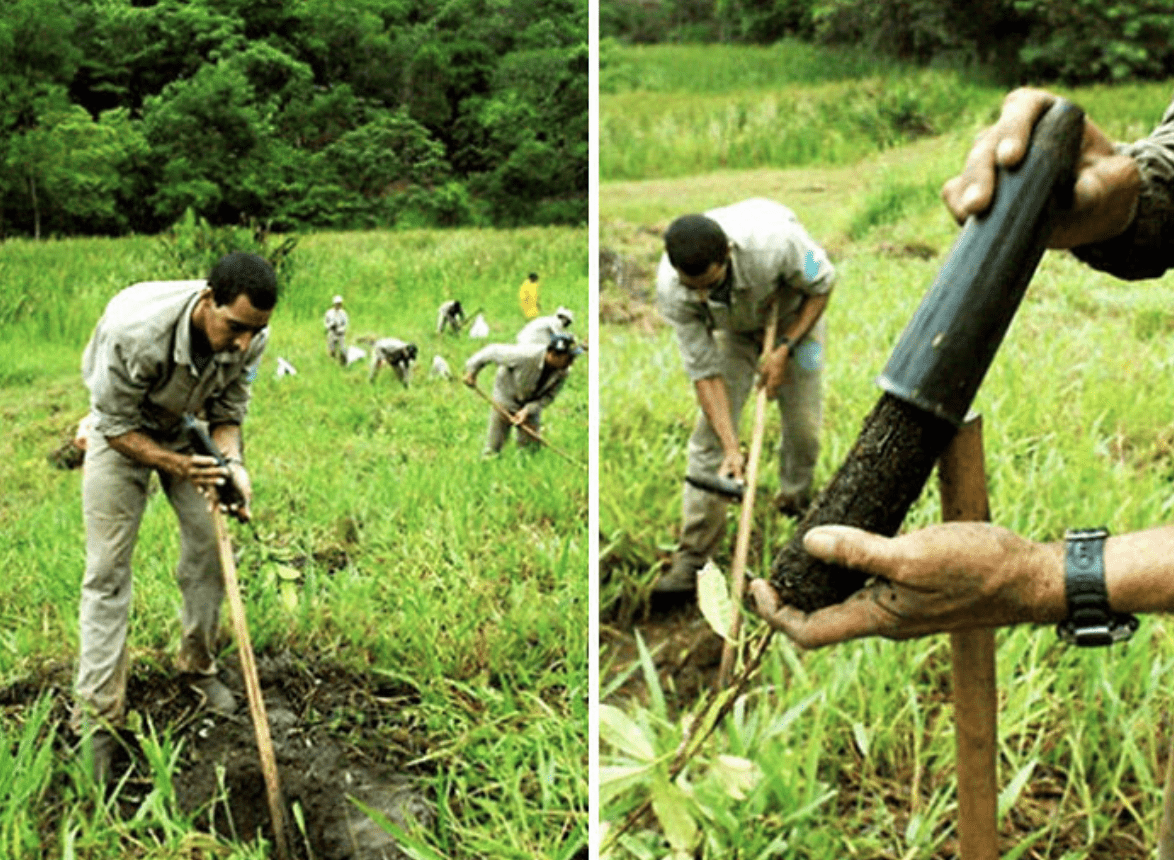The Florida Everglades, often described as a river of grass, presents a unique and vast ecosystem that stretches 60 miles wide and 100 miles long. This slow-moving river, with its half-mile per day flow, is a natural wonder full of fascinating secrets and environmental challenges. Here are five remarkable facts about this diverse and crucial … Continue reading 5 Facts About the Florida Everglades: Nature’s Unique Waterworld
Enjoy These 15 Animals Without Necks, Just Because
I don’t know how to prepare you for what you’re about to see. There’s really no clever way to introduce it.
These are animals without necks. When you see them, you will want to laugh. And that’s fine, because they are not cursed to live this way by some genetic accident. They’re just the fever dreams of a photoshopping Instagrammer who…has certainly found their niche.
Here are what some animals would look like without necks. Just because.
15. Polar Bear
He do a strut.
14. Zebra
This is me after I tell a bad joke and nobody laughs.
13. Deer
Such a majestic creature.
12. Pelican
Are you a pelican or a pelican’t?
11. Giraffe
“Oh come on man, that was like my ONE THING.”
10. Tiger
Excuse me, comin’ through.
9. Donkey
Dat *ss though.
8. Cow
She looks so suspicious, I can’t handle it.
7. Camel
Don’t smoke, kids.
6. Elephant
Lemme just strut this tusk for a minute.
5. Goat
The greatest of all time.
4. Hippo
Is this a baby Jabba the Hutt?
3. Turkey
Nice try, Thanksgiving.
2. Doge
Truly man’s best friend.
1. Meerkat
Or mere cat?
I’ve been laughing for so long and staring at these so intently that I’ve nearly forgotten what necks look like. I may shock myself when I see my own in the mirror soon.
I think this is really what photoshop has been leading up to. Nay, it’s what computer technology in general has been leading up to.
Which one do you think is the funniest? What do you hear them saying in your head when you see the picture?
Tell us in the comments.
The post Enjoy These 15 Animals Without Necks, Just Because appeared first on UberFacts.
An Adorable Gallery of 11 Kittens
Here’s a question: can there be too many cats on the internet?
Answer: how dare you even ask that.
If I had a nickel for every cat picture I’d stared at, I’d use them to buy more cat pictures. I have a problem. But by golly, whether they’re the smolest baby or the biggest murder floof, there’s something magical and derpy about felines.
Let’s check out some now instead of doing work.
11. I juz needz mowr rest pls…
10. There can be only one
9. Things get better with age…
8. “Yeah…we’ll wait.”
7. Twinning!
6. Itty Bitty Kitty Committee
5. No bites please
4. “Your days are numbered, Karen.”
3. Homeward bound
2. Lost in a sea of blankets
1. The cats of the internet belong to us all
Welp, I’ve gotta go foster 11 cats now. Might need to rent a U-Haul.
While I’m doing that, share your cat pics and stories in the comments.
Because I need them.
The post An Adorable Gallery of 11 Kittens appeared first on UberFacts.
A Miner in Russia’s Arctic Circle Takes Beautiful Photos of Foxes During Breaks From Work
In the north-eastern Chukotka region of Russia’s Arctic, one photographer finds the animals living there and captures them with his camera on his breaks from mining.
Posted by Kislov Ivan on Friday, May 11, 2018
The environment is bleak, and sparsely populated with ethnic Russians, Chukchis, and other indigenous peoples.
Лисенок.Чукотка.2014г.
Posted by Kislov Ivan on Saturday, September 23, 2017
There are virtually no roads and people here survive mostly by hunting reindeer.
Posted by Kislov Ivan on Friday, September 22, 2017
But wildlife thrives and Ivan Kislov has no problems finding it for his fantastic photos.
Posted by Kislov Ivan on Monday, September 18, 2017
Kislov lives in the north-eastern port city of Magadan and works as a mining engineer in Chukotka.
Posted by Kislov Ivan on Monday, September 18, 2017
He told Bored Panda that he likes to take “relaxation from routine,” go on “hikes to inaccessible places, raftings,” and walking to “observe the wildlife.”
Posted by Kislov Ivan on Monday, September 18, 2017
He enjoys these activities on his breaks during long shifts at the mines.
Mining for oil, natural gas, coal, gold and tungsten is a major part of the economy here.
Posted by Kislov Ivan on Monday, September 11, 2017
He often finds bear, deer and wolves, but it’s the foxes who let their natural curiosity keep them from retreating.
Posted by Kislov Ivan on Monday, September 11, 2017
Kislov says they will let him get close-in so he can shoot with wide-angle and telephoto lenses for amazing shots.
Всем огромное спасибо за поздравления!!! Очень приятно.Снежный лис.Чукотка.Ноябрь 2014г.
Posted by Kislov Ivan on Tuesday, August 15, 2017
His photos show all the playfulness and beauty of these animals against the stark environment of the Russian Arctic.
What an absolutely wonderful hobby? But we want to know what you think! Would you get so close to take these beautiful pics?
Let us know in the comments!
The post A Miner in Russia’s Arctic Circle Takes Beautiful Photos of Foxes During Breaks From Work appeared first on UberFacts.
This Is What Happens to Mosquitoes in the Winter
The greatest thing about winter is the lack of bugs. No pesky mosquitoes making you itch every time you go outside at night! It’s such a relief — but, like, what even happens to mosquitoes in winter? Do they fly south, like birds?
Not quite, according to Mental Floss.
Mosquitoes have difficulty surviving in any temperatures below 50 degrees Fahrenheit, but their strategy depends on their sex. Males simply die off, though not directly due to the cold — instead, the winter just happens to coincide with the end of their life cycle, when they’ve already finished mating. They actually only live for about 10 days anyway.
Females, on the other hand, enter what is called diapause, a rested state similar to hibernation. They find a hollow log to burrow into, slow their metabolism, and hunker down until the cold is over. Females can stay in diapause for up to six months, thanks to the large reserves of energy that they hoard beforehand — they eat up to 10 times their normal body weight in blood to prepare for this stage.
Photo Credit: iStock
After warm weather returns, females leave their burrow and return to their normal metabolism. Then they must search for more food (blood) to nourish their eggs, and the whole dreadful cycle starts all over again.
Photo Credit: iStock
Unfortunately, there are some exceptions to all this. Some types of mosquitoes can actually breed underground in the winter and forego food, allowing them to stay alive all throughout the cold months. A species called Culex pipiens molestus invaded a poor Manhattan neighborhood in exactly this manner.
Bummer.
The post This Is What Happens to Mosquitoes in the Winter appeared first on UberFacts.
Animal life in Chernobyl is thriving…
Animal life in Chernobyl is thriving, not because the radiation is gone, there’s still a lot of it, but because there’s barely any humans living in that area.
Gorillas like to Sing “Little Food Songs” When They Eat
Now this is a story we can all get behind!
A German scientist at the Max Planck Institute for Ornithology who was working in the Republic of the Congo recently reported that gorillas hum and sing while they eat.
Yummy songs, if you will.
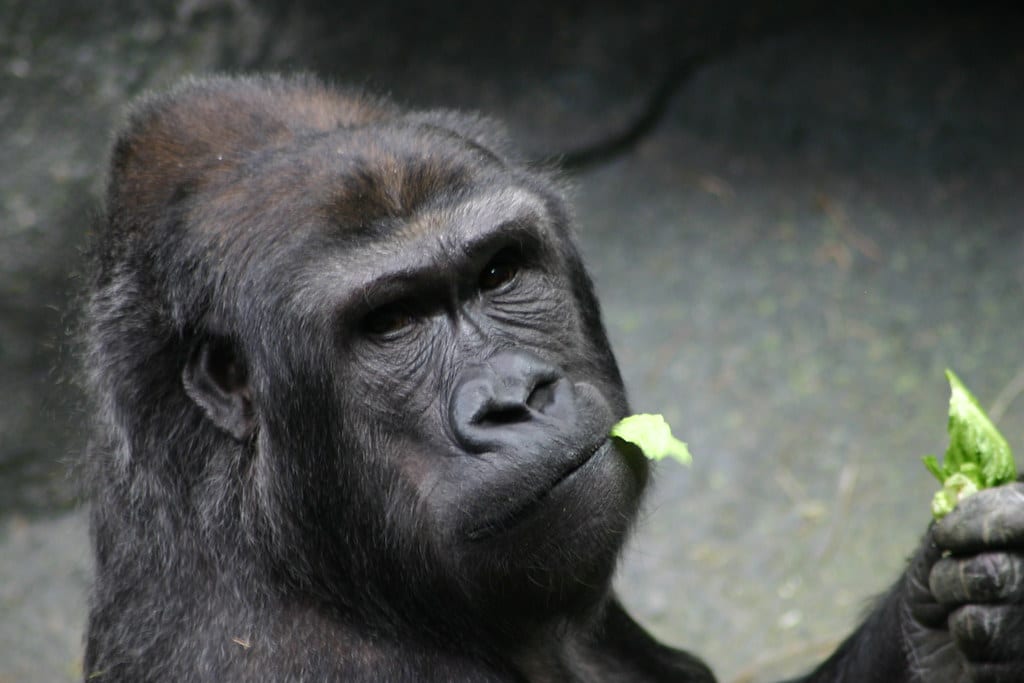
Photo Credit: Flickr
Eva Luef, primatologist from the institute based in Seewiesen, Germany, studied two families of western lowland gorillas in Congo, and identified the two types of sounds.
While calls regarding food have been observed from chimpanzees, this behavior has never before been officially recorded in gorilla study.
Two different types of sounds have now been observed coming from dominant silverback males at meal time. One is a low hum that may show contentment or happiness. You can listen below:
The other sound–a short series of notes like a song–may be used to call other members over to the food. You can listen below:
Since the males are the leaders, they are the ones that call family over for dinner. It appears to be the males’ way of holding on to their females and keeping them fed and happy. Luef also observed the songs are made up by the big males for each meal time, rather than being the same tones repeated.
More chimps make the nom-nom sounds–not just the dominant males. This may be because chimpanzees have a much more fluid society when it comes to who hangs with whom.

Photo Credit: Pixnio
Researchers think they may have found a clue into how language among humans evolved. Because of the variation in the songs, food calls may have been a start to the way early humanity communicated.
Because no species can evolve on an empty stomach.
The post Gorillas like to Sing “Little Food Songs” When They Eat appeared first on UberFacts.
Female Lionesses in Botswana Grew Long Manes and Started Acting like Males
Well, this is kinda cool.
Five lionesses in Botswana started behaving like male lions — long manes and all.
Male and female lions look and behave quite differently from each other. Male lions have big manes and they roar a lot. Female lions don’t have a mane and they’re not as vocal. The ladies also do the majority of the pride’s hunting.
Once in a while, though, lionesses start to act more like “one of the guys.”
OKC Zoo veterinary caretakers are working to solve a very curious case; Bridget, the Zoo’s 18-year-old African lioness,…
Posted by Oklahoma City Zoo and Botanical Garden on Monday, February 19, 2018
Researchers observed five lionesses at the Moremi Game Reserve in Botswana exhibiting male behaviors, like growing long manes, marking their territory, mounting other females, and roaring.
These changes are likely due to increased levels of testosterone, scientists say.
“While some of the maned lionesses were observed mating, none of them became pregnant, suggesting they are infertile, a known consequence of high levels of androgens such as testosterone in females,” Katherine Alexander at Virginia Tech explained. “The behavioral changes suggest this is likely the case.”
This isn’t the only time that a lioness has undergone this change. An 18-year-old female called Bridget, born into captivity at the Oklahoma City Zoo, grew a “mini-mane.” In 2011, a captive lioness called Emma in South Africa grew a mane, too, and tests revealed high levels of testosterone due to an issue with her ovaries.
However, this phenomenon is most common in Botswana’s Okavanago Delta, where maned lionesses are a regularity, likely due to a genetic predisposition.
The post Female Lionesses in Botswana Grew Long Manes and Started Acting like Males appeared first on UberFacts.
A Vet’s Office Thought They Were Treating an Exotic Bird, but It Was Just Covered in Curry
Some folks recently brought what they believed to be an exotic, orange bird to the Tiggywinkles Wildlife Hospital in England because they saw it stranded on the side of the road looking like it couldn’t fly.
Looks pretty exotic to me.
Posted by Tiggywinkles Wildlife Hospital on Monday, July 1, 2019
Ooohhhhh, I wonder what species it could be…
So the vets got to work treating the bird.
Posted by Tiggywinkles Wildlife Hospital on Monday, July 1, 2019
Posted by Tiggywinkles Wildlife Hospital on Monday, July 1, 2019
And what did they discover? The bird was actually a seagull covered in curry.
The Facebook post from the animal hospital read:
“This is one of the strangest casualty circumstances we have seen in a while! This bright-orange herring gull was rescued by kind members of the public who spotted him at the side of the A41. When they called to say they had picked up an orange bird, we had no idea what to expect – and would never have guessed at this!
He had somehow gotten himself covered in curry or turmeric! It was all over his feathers, preventing him from flying properly. We have no idea how he got into this predicament but thankfully, apart from the vibrant colour and pungent smell, he was healthy.
Our veterinary team bravely bathed the gull (now named Vinny after a Vindaloo curry) to clean off his feathers. He managed to cover them in curry water, but eventually did let us scrub him clean.
He is now looking much better and should be able to go for release very soon! As we say, we never know what will come through our doors next!
Huge thanks to the lovely finders who stopped to rescue him.”
Posted by Tiggywinkles Wildlife Hospital on Monday, July 1, 2019
Vindaloo, I mean Vinny, is now doing just fine. But he needs to avoid all Indian food for the time being…
The post A Vet’s Office Thought They Were Treating an Exotic Bird, but It Was Just Covered in Curry appeared first on UberFacts.
Photographer and His Wife Restore Life to a Dead Ecosystem by Planting 4 Million Trees
Earth Day has come and gone, but as humans, we should consider doing something for our environment more than once a year. Of all the myriads ecological disasters befalling us, deforestation is one of the biggest issues we face. The Food and Agriculture Organization of the United Nations states that the growth of the global population from 7.6 billion to 10 billion in 2050 (estimated) will vastly effect how we use our land, likely including further deforestation:
“Land-use changes result in a loss of valuable habitats, land degradation, soil erosion, a decrease in clean water and the release of carbon into the atmosphere. How to increase agricultural production and improve food security without reducing forest area is one of the great challenges of our times.”
So what can we do? As we continue to expand into forested areas, deforestation can seem overwhelming.
Photo Credit: Instituto Terra
But not to Brazilian photographer Sebastião Salgado and his wife Lélia. Two decades ago, he took over the land he grew up on and was devastated by what he saw: deforestation at its most severe. The land no longer held the tropical paradise he remembered. Rather, it was desolate, and all the wildlife from his youth was gone.
Over the last 20 years, he and his family made it a mission to plant one tree at a time to restore his once beautiful homeland. The results are incredible.
An aerial view of the land.
Photo Credit: Instituto Terra
In an interview with The Guardian, Salgado said:
“The land was as sick as I was – everything was destroyed. Only about 0.5% of the land was covered in trees. Then my wife had a fabulous idea to replant this forest. And when we began to do that, then all the insects and birds and fish returned and, thanks to this increase of the trees I, too, was reborn – this was the most important moment.”
In April of 1998, they started an organization called Instituto Terra or “Earth Institute” and raised enough funds to plant 4 million saplings native to that land and surrounding areas.
Photo Credit: Instituto Terra
“Perhaps we have a solution,” Salgado said. “There is a single being which can transform CO2 to oxygen, which is the tree. We need to replant the forest. You need forest with native trees, and you need to gather the seeds in the same region you plant them or the serpents and the termites won’t come. And if you plant forests that don’t belong, the animals don’t come there and the forest is silent.”
The results of his restorative efforts are extremely impressive: 172 species of birds have returned, 33 kinds of mammals, nearly 300 species of plants, and 30 species of reptiles and amphibians. His institute managed to rebuild an entire ecosystem from literally the ground up.
It just goes to show, if you have passion and commitment, you can achieve anything. And when it comes to our environment, that is priceless. I’ll give Salgado the last word:
“We need to listen to the words of the people on the land. Nature is the earth and it is other beings and if we don’t have some kind of spiritual return to our planet, I fear that we will be compromised.”
The post Photographer and His Wife Restore Life to a Dead Ecosystem by Planting 4 Million Trees appeared first on UberFacts.

 (@nonecks)
(@nonecks)


